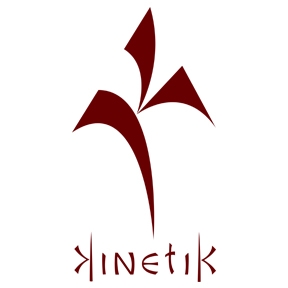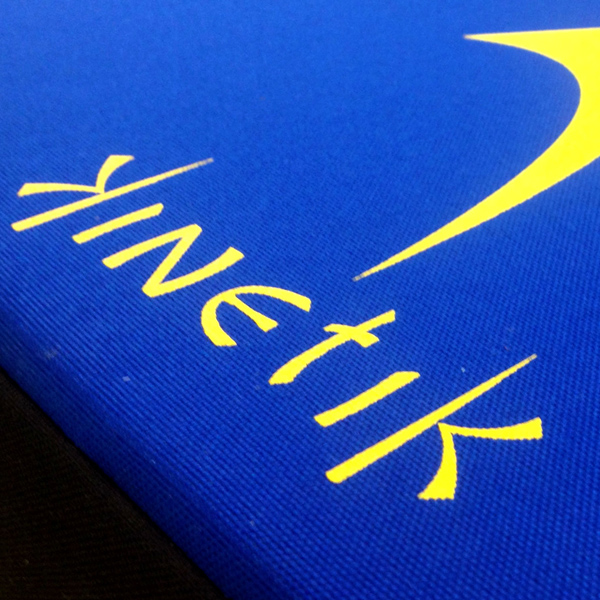Since 2001, the development of the Kinetik Climbing Newton Crash pad has been a work in progress. Back in Southern Illinois, we came to a realization that the crash pads available on the market had room for improvement. In our small rental house the first designs came together. After some military grade fabrics, some foam, and a whole lot of broken sewing machine needles, KinetiK had its first crashpads. It took a long time, and a lot more money than we expected. Finally, the designs came together and the foundation of the Kinetik Newton was born. The foundation of the Kinetik Climbing crash pad ascended from our design education. Years of study that told us that a product, through research, testing, and a little customer feedback, could always be made into something better and more enjoyable.
Waterproof and Reinforced Vinyl
Our first big breakthrough for the Kinetik crash pad was the idea of creating a bouldering pad that could easily be cleaned after a wet session in the swampy ground in Southern Illinois’ Bouldering areas. Utilizing a military grade, waterproof vinyl fabric, we decided that the shell could be made 100% waterproof, providing easy cleaning after the most swampy landings. This fabric was unruly as all hell, but with a lot of pattern work, and a lot of broken needles, we worked out one of the first iterations of the Newton crash pad.
Keep it Clean
With a crash pad that could be hosed off after a bouldering session, we thought we had a great solution to the dirty pad problem. However, we quickly realized that we still had a shoulder strap area covered in mud and dirt for the hike out of the boulder fields. With our backs covered in mud, our cars quickly took the brunt of the abuse as well. The Kinetik design team started work on the development of crash pad numero duo. Finally, the we worked layout of flaps and straps version of the Newton. Despite being a much better solution, it was a long way from production. With this series of flaps, a bunch of straps, and a lot more pattern work, we solved our second problem with the common bouldering pad. The Omni-Strap layout was beginning to take shape. Still coming from the basement workshops of Southern Illinois, KinetiK had to make a 1000 mile move to make the dreams happen.
The Most Vital Component
Next, Kinetik made the move to Boulder, Colorado to pursue more adventurous bouldering on the Front Range of the Rockies. This is when the real work began, starting a legit climbing product business. First, we set up a small shop, and took our years of testing to create a final production model. First we found the absolute highest quality foam combination, disregarding the costs. Next, designing patterns that could used in a manufacturing setting. Kinetik Climbing Products was built with a lot of sweat and a lot of determination. Through multiple part-time jobs, failed relationships, and many hardships, the company continued to progress and laid a foundation to become the business we have today. In these years, the crash pad design morphed and transitioned into the basic form it holds today.
In these middle years, patterns were altered, straps were shortened, lengthened, and Velcro closures were used in different areas. We went through a lot of crash pad changes in this time. After a few years, to further simplify the system, industrial Velcro was integrated into all the closure areas of the Kinetik Newton crash pad. With further development, using our flap system, we were able to create a system of stacking pads which eliminates the need for additional straps to carry multiple crash pads.
Production of the Crash Pad
Finally, the crash pad design was ready. Next, actual sales and production moved to the forefront. As a business, it became increasingly necessary to streamline the production of the Newton. With all the added features, high quality materials, and continuing our dedication to Made in the USA, the Newton cost a fortune. It had moved itself out of the price range for the beginner or intermediate boulderer. We went back to the drawing board. After cutting new patterns, we committed ourselves to only one color of waterproof military fabric. Next, by putting the waterproof material only where absolutely necessary, we were able to streamline the assembly process. This lowered our retail price points without compromising our commitment to the highest quality landing foam available. Creating a patterned landing zone, with industrial upholstery, durable ballistic fabrics, and a large variety of color, made the stand alone in the wide world of bouldering crash pads.
Be KinetiK
I hope you enjoyed the trip through memory lane for us at Kinetik Climbing. Although we absolutely love our solution found in the Newton Crash Pad system, we strive every day to make them even better. There are always changes on the way in the Kinetik design department. At no point in our history or our future will we sit back on our heels and let good enough be good enough for us.

